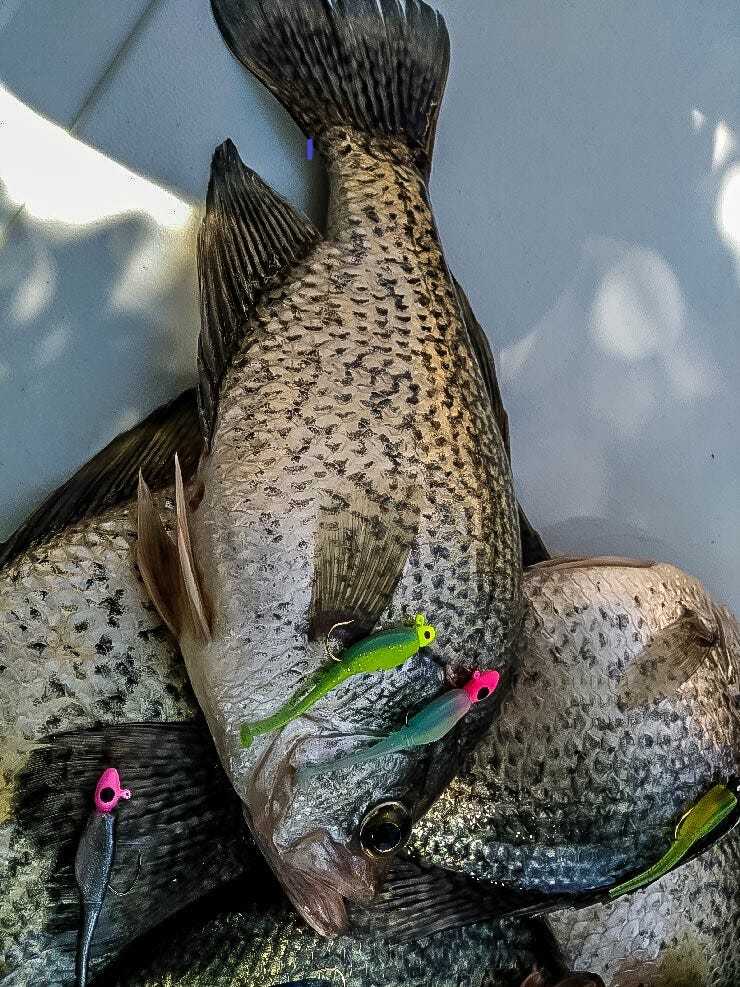- Jan 15, 2021
How to fish for crappie vertically over cover
Learn to locate crappie-holding cover and the best techniques for making those fish bite.
Crappie are interesting little fish who bundle up tightly around cover in the coldest parts of the year, making them easy to locate using your graph. But how do you fish for crappie vertically? From technique to equipment, I’ll tell you how, with four helpful steps from start to finish in this blog!
1. Locating cover
This is by far the most important part of learning how to fish for crappie vertically and seems pretty simple. But, it’s not! Crappie tend to look for certain types of cover, be it free standing timber you can visibly see, or brush that has been placed in depth zones by other fishermen. The easiest finds are obvious trees sticking out of the water in the right depths. Typically, crappie dwell in the 10-20 foot range in the winter, so finding timber that exists in that zone can be very productive. The hardest kind of timber to find is sunken timber or brush piles. For these you need to use the electronics on your boat. Preferably structure scan, but regular sonar can find brush piles as well. The best places to check for sunken brush are off the edges of points, flats, or near boat docks. Identifying crappie on top of the brush is not always the easiest task, but they can be differentiated from most other fish. Crappie tend to bunch up tall on top of the brush or around it, so there will be several small dots tightly packed together.




